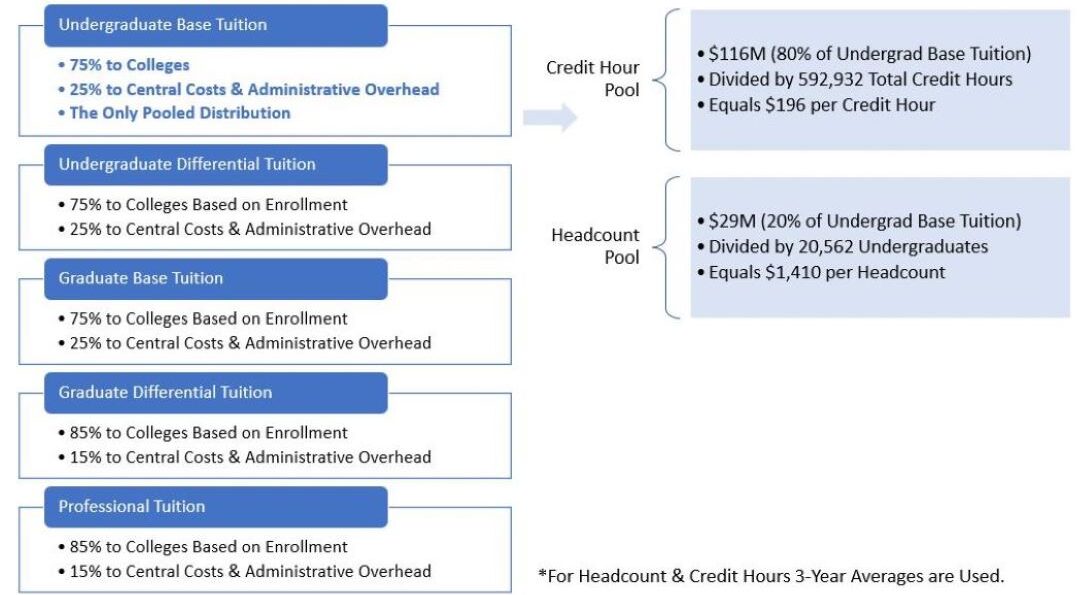Tuition and Budget Model

The Tuition Model describes how tuition is distributed throughout the campus to support UIC’s instructional mission. UIC adheres to a Responsibility Centered Management (RCM) Budget Model. The model was implemented to achieve the following goals:
- Achieve greater transparency in fiscal decision making
- Promote fiscal responsibility and accountability
- Maximize financial, physical and human resources
- Tie revenue more closely to the effort that generated the revenue –instructional effort and enrollment levels
- Promote innovative and entrepreneurial activities that are financially viable
- Provide deans and other academic decision makers with more control and influence over financial resource decisions
More information about UIC's RCM budget model can be found at UIC Budget Model Summary.
The image above illustrates how tuition is divided between the Colleges and the Campus. For Undergraduate programs, 75% of tuition goes to the College and 25% to the Campus. For Graduate base tuition, 75% goes to the College and 25% to the Campus. For Graduate differentials, the Colleges receive a larger share of tuition – 85%. Professional programs receive 85% of tuition and the Campus receives 15%.
Programs described as “professional programs” in the Graduate catalog but that do not fall into the IBHE professional degree designation, follow the graduate (not professional) tuition revenue distribution model (e.g. MBA, Business Administration; MEng, Engineering).
Please note that the IBHE (Illinois Board of Higher Education) definition of a "professional" degree is: A doctor's degree that is conferred upon completion of a program providing the knowledge and skills for the recognition, credential, or license required for professional practice. The degree is awarded after a period of study such that the total time to the degree, including both pre-professional and professional preparation, equals at least six full-time equivalent academic years. Some of these degrees were formerly classified as first-professional and may include: Chiropractic (D.C. or D.C.M.); Dentistry (D.D.S. or D.M.D.); Law (J.D.); Medicine (M.D.); Optometry (O.D.); Osteopathic Medicine (D.O); Pharmacy (Pharm.D.); Podiatry (D.P.M., Pod.D., D.P.); or, Veterinary Medicine (D.V.M.), and others, as designated by the awarding institution.
Tuition distributed to the Campus is used to fund financial aid, administrative operations, and other strategic priorities.
As the RCM model had not been comprehensively examined since its implementation in 2008, a collaborative Budget Model Redesign Initiative was launched in 2021 to evaluate for opportunities to enhance strategic alignment and better support financial sustainability in light of current challenges. Additionally, an Overhead Cost Workgroup has been established to conduct an overhead cost study that will inform these discussions and increase transparency overall.